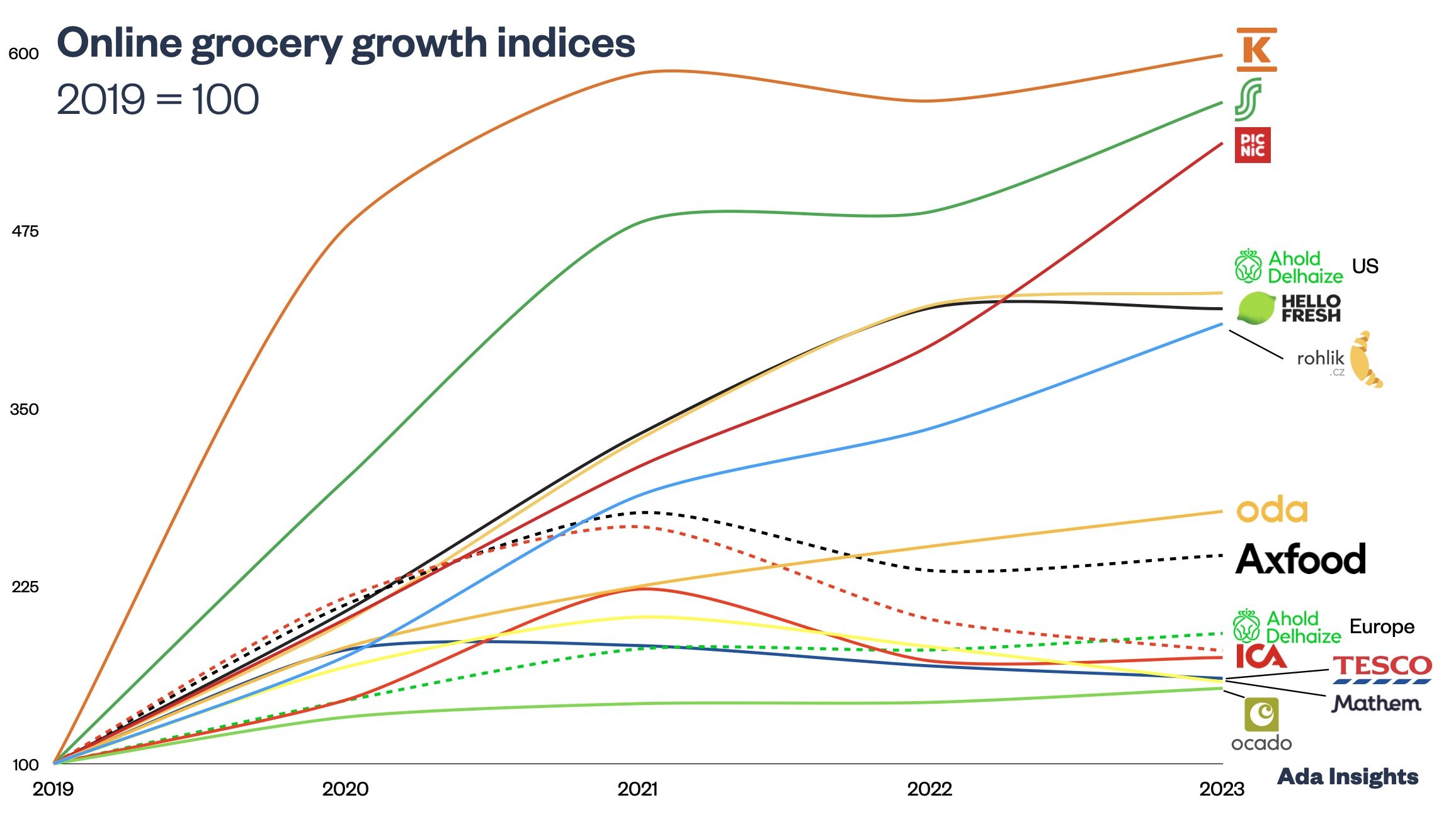HelloFresh - a DTC brand or an online grocer?
HelloFresh organised a Capital Markets Day on the 23rd of March (Full recording and presentation of the event). This post summarises some key points from the event.
A leading DTC brand in groceries?
In the marketing segment of Capital Markets Day, HelloFresh described itself as a DTC company and compared itself to traditional FMCG brands. This is an interesting definition, as HelloFresh has traditionally been described as a meal kit company or even an online grocer.
The distinction to a big Direct-to-Consumer FMCG company puts the structure and capabilities of the company in a new light. In the image above HelloFresh emphasises how they provide a more efficient way to reach customers than a traditional FMCG model of selling via retailers.
In the DTC model, the marketing costs are traditionally high, but the revenues are significantly smaller (at least for now). The lack of retailer margins balances higher marketing costs, which can be viewed as another marketing cost to get the product into the hands of as many customers as possible.
The other big difference between the DTC and an FMCG model is that a Direct model leads to first-party data that the retail model does not offer. Retailers provide a tried-and-tested way of reaching big audiences, but only as a supplier. The customers interact with the retailers. The DTC model requires significantly more work to acquire the customers, but they are your own customers, not anyone else’s.
The big question for FMCG brands is whether to have a lot of data on a general level (from a retailer) or fewer data but with much more granularity (DTC).
Expansion beyond meal kits
HelloFresh has operated its original meal kit business for quite a long time. There are a lot of possibilities to extract value from the meal kit customers by selling side dishes and opportunities to customise and upgrade their meals.
From the traditional meal kits, the company has expanded to serving lunch via ready-to-eat meals. The company has recently ventured into more conventional grocery offerings with its HelloFresh Market, which offers customers snacks, desserts and breakfasts. This resembles a traditional grocery operation, albeit providing a very narrow assortment of several hundred products.
HelloFresh Market proposition offers the company a huge expansion possibility regarding the Total Addressable Market (TAM).
The grocery operation (HelloFresh Market) will be rolled out to many more markets this year. The company states that when customers start also using the grocery operation, it positively impacts their average order value. That translates to more than a 20% increase in the average order value, and on top of that, creates higher reordering frequency.
Unique growth flywheel and loyalty to FMCG
As a direct-to-consumer company, HelloFresh has a different type of growth flywheel than a traditional FMCG company. HelloFresh can directly improve the customer experience with the website user interface and improve product selection. A better experience drives higher loyalty and sales, producing more data for marketing and product development. Higher volumes also drive the cost structure down in sourcing and fulfilment. This helps HelloFresh to create a positive feedback loop to drive further growth.
On their Capital Markets Day HelloFresh did emphasise how their customers have become more satisfied and have started to order more meals per box. Also, the cancellation rates have been dropping due to improved product assortment. The improved products include more ready-to-eat meals and grocery products to cover more of the overall eating needs of the customer.
This improvement has led to encouraging revenue retention numbers illustrated by the different customer cohorts of the company. HelloFresh seems capable of getting its customers to remain loyal for years. More than 20% of the customers who started ordering six or seven years ago are still buying from the company.
Strong growth with robust profitability
The third element emphasised by HelloFresh was the strong sales growth they’ve generated throughout the years, even after the pandemic. With revenues of more than €7.6 billion, HelloFresh is one of the world’s biggest online grocers, whether they see them as an online grocer or a direct-to-consumer brand.
The even more significant difference is when seen from the perspective of profitability. HelloFresh generated an Adjusted Ebitda of €500 million during the last year. This led to an AEBITDA margin of 6.3%. Very few online grocers can report positive profitability.


























